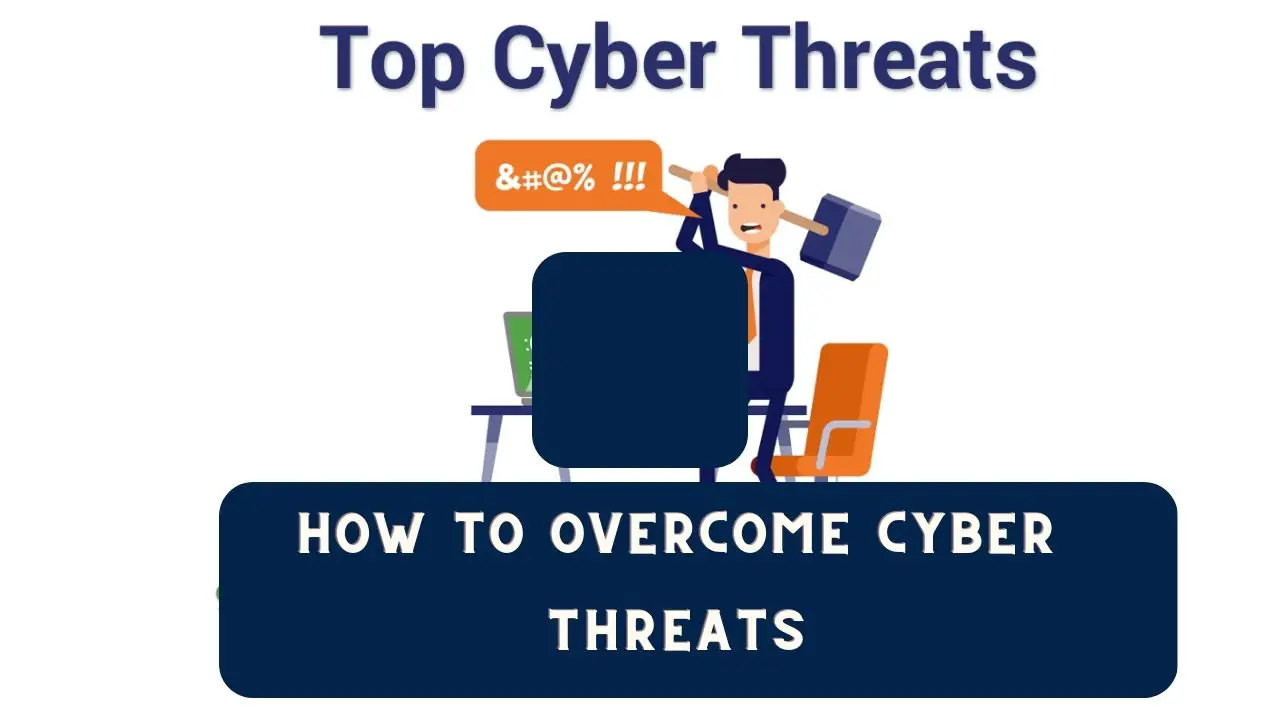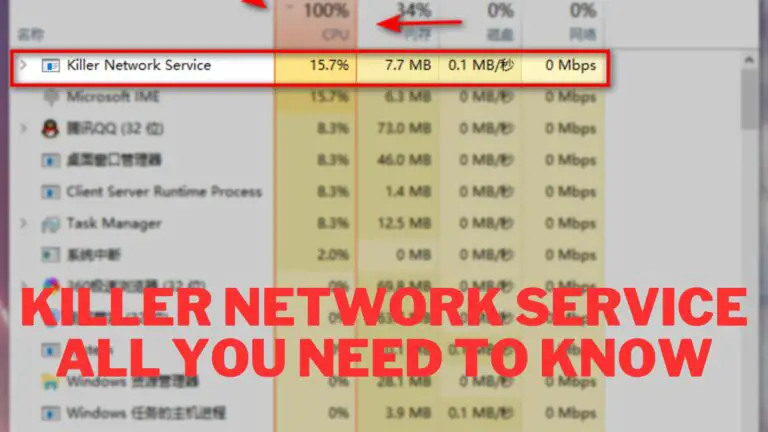Cybersecurity Threats and How to Protect Your Devices
Introduction
Cybersecurity threats have become increasingly prevalent in today’s interconnected world, posing significant risks to individuals, businesses, and governments alike. With the proliferation of digital devices and the rise of online activities, the potential for cyber-attacks has grown exponentially, making it imperative for individuals and organizations to prioritize cybersecurity measures.
By raising awareness about cybersecurity threats and empowering readers with actionable insights and preventive measures, this article aims to promote a culture of cyber resilience and enable individuals and organizations to navigate the digital landscape safely and securely. Let us embark on a journey to explore the evolving world of cybersecurity and discover how to fortify our defenses against emerging threats.
Common Cybersecurity Threats
Cybersecurity threats come in various forms, each with its techniques and objectives. Understanding these threats is essential for individuals and organizations to protect themselves effectively. Here are some of the most common cybersecurity threats:
- Malware:
- Malware, short for malicious software, includes viruses, worms, Trojans, ransomware, spyware, and adware. Malware is designed to infiltrate systems, disrupt operations, steal sensitive information, or extort money from victims.
- Phishing:
- Phishing attacks involve fraudulent attempts to trick individuals into disclosing sensitive information, such as passwords, credit card numbers, or personal data. Phishing emails, messages, or websites often impersonate legitimate entities to deceive users into providing confidential information.
- Ransomware:
- Ransomware is a type of malware that encrypts files or locks users out of their devices, demanding payment (usually in cryptocurrency) for decryption or restoration of access. Ransomware attacks can cause significant financial losses and disrupt business operations.
- DDoS Attacks:
- Distributed Denial of Service (DDoS) attacks flood a target system, network, or service with an overwhelming volume of traffic, rendering it unavailable to legitimate users. DDoS attacks disrupt online services, websites, and networks, causing downtime and financial losses.
- Insider Threats:
- Insider threats occur when individuals with authorized access to systems or data misuse their privileges for malicious purposes. Insider threats can result from disgruntled employees, negligent actions, or unwitting accomplices manipulated by external attackers.
- Social Engineering:
- Social engineering attacks exploit human psychology to manipulate individuals into divulging sensitive information or performing actions that compromise security. Social engineering techniques include pretexting, baiting, tailgating, and phishing.
- Man-in-the-Middle (MitM) Attacks:
- Man-in-the-Middle attacks intercept communication between two parties, allowing attackers to eavesdrop on, alter, or impersonate the communication. MitM attacks can compromise the confidentiality and integrity of data transmitted over networks.
- Zero-Day Exploits:
- Zero-day exploits target vulnerabilities in software or hardware that are unknown to the vendor or developer. Attackers exploit these vulnerabilities to launch attacks before patches or security updates are available, making them particularly dangerous.
- Advanced Persistent Threats (APTs):
- Advanced Persistent Threats are sophisticated, targeted attacks launched by well-funded and skilled adversaries, such as nation-states or organized cybercriminal groups. APTs involve persistent, covert infiltration of networks to steal sensitive information or disrupt operations over an extended period.
- Identity Theft:
- Identity theft involves stealing someone’s personal information, such as social security numbers, bank account details, or login credentials, to impersonate them or commit fraud. Identity theft can lead to financial fraud, unauthorized access to accounts, and reputational damage.
Understanding these common cybersecurity threats is the first step towards implementing effective security measures to protect against them. By remaining vigilant, adopting best practices, and leveraging cybersecurity tools and technologies, individuals and organizations can mitigate the risks posed by these threats and safeguard their digital assets.
Understanding the Impact of Cybersecurity Threats
Cybersecurity threats have far-reaching consequences that extend beyond immediate financial losses or data breaches. The impact of cyber attacks can affect individuals, businesses, governments, and society as a whole in various ways. Here are some key aspects to consider when assessing the impact of cybersecurity threats:
- Financial Losses:
- Cyber attacks can result in significant financial losses for individuals, businesses, and governments. Direct costs may include ransom payments, fraud-related expenses, regulatory fines, and costs associated with restoring systems and data. Indirect costs, such as lost productivity, reputational damage, and legal fees, can further exacerbate the financial impact of cyber attacks.
- Data Breaches:
- Data breaches expose sensitive information, such as personal data, financial records, intellectual property, and trade secrets, to unauthorized access or disclosure. The loss or compromise of sensitive data can have severe consequences, including identity theft, fraud, extortion, and damage to reputation.
- Reputational Damage:
- Cyber attacks can tarnish the reputation and credibility of individuals, businesses, and organizations. News of a data breach or security incident can erode trust among customers, partners, investors, and the public, leading to loss of business, customer attrition, and long-term reputational damage.
- Operational Disruption:
- Cyber attacks disrupt business operations by disrupting critical systems, networks, and services. Downtime resulting from cyber attacks can lead to lost revenue, missed deadlines, disrupted supply chains, and reduced productivity. In some cases, organizations may be forced to suspend operations entirely until systems are restored.
- Regulatory Compliance Violations:
- Cyber attacks can result in violations of regulatory requirements and compliance standards, such as GDPR, HIPAA, PCI DSS, and SOX. Failure to protect sensitive data or comply with regulatory mandates can lead to legal consequences, fines, and penalties imposed by regulatory authorities.
- Intellectual Property Theft:
- Cyber attacks targeting intellectual property (IP) can result in the theft, loss, or unauthorized disclosure of proprietary information, research findings, trade secrets, and innovative technologies. Intellectual property theft undermines competitiveness, innovation, and market differentiation, posing long-term threats to business viability and growth.
- National Security Risks:
- Cyber attacks targeting critical infrastructure, government agencies, and military systems pose national security risks. Nation-state actors, cybercriminal organizations, and terrorist groups may launch cyber attacks to disrupt essential services, undermine democratic processes, steal classified information, or exert geopolitical influence.
- Social and Psychological Impact:
- Cyber attacks can have social and psychological effects on individuals and communities, including feelings of insecurity, distrust, and anxiety. Victims of cyber attacks may experience stress, emotional distress, and loss of privacy, impacting their mental well-being and quality of life.
- Global Economic Impact:
- Cybersecurity threats pose a significant economic burden on the global economy. According to estimates, cybercrime costs the global economy trillions of dollars annually in direct and indirect costs, affecting businesses of all sizes, industries, and geographic regions.
- Long-Term Consequences:
- The long-term consequences of cyber attacks may extend beyond immediate financial and operational impacts. Organizations may face prolonged recovery periods, increased insurance premiums, heightened regulatory scrutiny, and diminished investor confidence, resulting in lasting damage to their competitiveness and resilience.
In summary, the impact of cybersecurity threats is multifaceted and encompasses financial, operational, reputational, regulatory, national security, social, and psychological dimensions. Understanding the full scope of these impacts is essential for individuals, organizations, and policymakers to develop effective cybersecurity strategies, allocate resources appropriately, and mitigate the risks posed by cyber attacks.
Best Practices for Cybersecurity Protection
Effective cybersecurity protection requires a proactive approach that incorporates a combination of technical measures, security policies, and user awareness. By implementing best practices and adopting a comprehensive cybersecurity strategy, individuals and organizations can strengthen their defenses against cyber threats. Here are some key best practices for cybersecurity protection:
- Keep Software Updated:
- Regularly update operating systems, software applications, and firmware to patch security vulnerabilities and protect against known exploits. Enable automatic updates whenever possible to ensure timely installation of security patches.
- Use Strong, Unique Passwords:
- Create strong, complex passwords for all accounts and avoid using easily guessable passwords such as “123456” or “password.” Use a combination of uppercase and lowercase letters, numbers, and special characters. Consider using a password manager to securely store and manage passwords.
- Enable Two-Factor Authentication (2FA):
- Enable two-factor authentication (2FA) or multi-factor authentication (MFA) for added security. 2FA requires users to provide a second form of authentication, such as a one-time code sent to a mobile device, in addition to a password.
- Implement Firewalls:
- Install and configure firewalls to monitor and control incoming and outgoing network traffic. Firewalls act as a barrier between your device and the internet, blocking unauthorized access and malicious activity.
- Use Antivirus and Anti-Malware Software:
- Install reputable antivirus and anti-malware software to detect and remove malicious programs, such as viruses, worms, Trojans, and spyware. Keep antivirus definitions up-to-date and perform regular scans of your system.
- Be Cautious of Phishing Attempts:
- Exercise caution when clicking on links, downloading attachments, or providing personal information online. Be skeptical of unsolicited emails, messages, or phone calls that request sensitive information or prompt you to take immediate action.
- Secure Your Network:
- Secure your wireless network with strong encryption (e.g., WPA2) and a unique network passphrase. Disable guest network access and limit access to authorized devices. Regularly update router firmware and change default admin credentials.
- Backup Your Data Regularly:
- Implement a regular backup strategy to protect against data loss due to cyber attacks, hardware failure, or accidental deletion. Backup data to an external hard drive, cloud storage service, or network-attached storage (NAS) device. Test backups regularly to ensure data integrity and accessibility.
- Educate Yourself and Your Employees:
- Stay informed about common cybersecurity threats, emerging trends, and best practices for protecting against cyber attacks. Provide cybersecurity awareness training to employees, emphasizing the importance of security hygiene, safe browsing practices, and incident reporting.
- Implement Security Policies and Procedures:
- Establish comprehensive security policies and procedures that address access controls, data handling, incident response, and security awareness training. Enforce policies consistently across the organization and regularly review and update them to address evolving threats.
By incorporating these best practices into your cybersecurity strategy, you can enhance your resilience to cyber threats and minimize the risk of falling victim to cyber attacks. Remember that cybersecurity is an ongoing process that requires vigilance, collaboration, and continuous improvement to stay ahead of evolving threats.
Protecting Different Types of Devices
In today’s interconnected world, various types of devices are susceptible to cyber threats. From personal computers to mobile devices and IoT gadgets, each device presents unique security challenges. Implementing appropriate security measures tailored to the specific characteristics of each device is essential for comprehensive cybersecurity protection. Here’s how to protect different types of devices effectively:
- Personal Computers (PCs):
- Keep operating systems, software applications, and antivirus software up-to-date with the latest security patches and updates.
- Use strong, unique passwords for user accounts and enable two-factor authentication (2FA) for added security.
- Install and configure a firewall to monitor and control incoming and outgoing network traffic.
- Use reputable antivirus and anti-malware software to detect and remove malicious programs.
- Regularly back up important files and data to an external storage device or cloud storage service.
- Be cautious when downloading software or files from the internet and avoid clicking on suspicious links or email attachments.
- Mobile Devices (Smartphones and Tablets):
- Keep mobile operating systems, apps, and security software up-to-date to patch vulnerabilities and protect against malware.
- Set up device lock screen security, such as PIN, pattern, or biometric authentication (fingerprint or facial recognition).
- Use app permissions judiciously and only grant access to essential features and data.
- Download apps only from official app stores (e.g., Google Play Store, Apple App Store) and avoid sideloading apps from unknown sources.
- Enable remote tracking and wiping features to locate and erase data from lost or stolen devices.
- Use secure messaging apps with end-to-end encryption for sensitive communications and avoid public Wi-Fi networks for transmitting sensitive data.
- Internet of Things (IoT) Devices:
- Change default login credentials and disable unnecessary features or services to minimize attack surfaces.
- Keep IoT device firmware and software updated with the latest security patches and bug fixes.
- Segment IoT devices on separate network segments to isolate them from critical systems and data.
- Implement strong network security measures, such as firewall rules and network access controls, to restrict unauthorized access.
- Regularly audit and monitor IoT device activity for signs of suspicious behavior or unauthorized access.
- Research and select IoT devices from reputable manufacturers with a track record of prioritizing security and issuing timely updates.
- Wearable Devices (Smartwatches, Fitness Trackers, etc.):
- Keep wearable device firmware and software updated to patch security vulnerabilities and enhance device security.
- Set up device lock screen security and enable remote tracking and wiping features to protect against loss or theft.
- Review and adjust privacy settings to control the collection and sharing of personal data by wearable devices and associated apps.
- Avoid connecting wearable devices to unsecured Wi-Fi networks and be cautious when sharing sensitive data or granting app permissions.
- Gaming Consoles:
- Keep gaming console firmware and software updated with the latest security patches and updates.
- Use strong, unique passwords for console accounts and enable two-factor authentication (2FA) if available.
- Be cautious when downloading and installing third-party apps or software modifications (e.g., homebrew) to avoid malware or unauthorized access.
- Limit exposure to potentially malicious content or interactions in online gaming communities and multiplayer environments.
- Secure home network infrastructure with firewall protections and network segmentation to safeguard gaming consoles from external threats.
- Smart Home Devices (Smart TVs, Smart Speakers, Smart Appliances, etc.):
- Change default login credentials and disable unnecessary features or services to minimize attack surfaces.
- Keep smart home device firmware and software updated to patch security vulnerabilities and protect against exploitation.
- Implement strong network security measures, such as firewall rules and network segmentation, to isolate smart home devices from critical systems and data.
- Use secure Wi-Fi encryption (e.g., WPA2) and strong Wi-Fi passwords to protect smart home devices from unauthorized access.
- Regularly review and audit smart home device settings and permissions to ensure proper configuration and minimize security risks.
By following these device-specific security recommendations, users can strengthen their defenses against cyber threats and protect their devices and data from unauthorized access, exploitation, and compromise. Additionally, staying informed about emerging threats and security best practices is essential for maintaining robust cybersecurity posture across all types of devices.
Securing Your Online Activities
With the increasing prevalence of cyber threats, securing your online activities is crucial to safeguarding your personal information, financial data, and digital identity. Whether you’re browsing the web, shopping online, or accessing social media, adopting best practices for online security can help protect you from a variety of threats. Here are some essential tips for securing your online activities:
- Use Secure Websites:
- Ensure that websites you visit use HTTPS encryption, especially when submitting sensitive information such as login credentials, credit card details, or personal data. Look for the padlock icon and “https://” in the URL bar to verify a site’s security.
- Beware of Phishing Attempts:
- Be cautious of unsolicited emails, messages, or phone calls that request sensitive information or prompt you to click on links or download attachments. Avoid providing personal information or clicking on suspicious links, and verify the authenticity of communication with legitimate sources.
- Practice Safe Browsing Habits:
- Avoid visiting suspicious websites, downloading files from untrusted sources, or clicking on pop-up ads and banners. Be wary of offers that seem too good to be true or websites that prompt you to install software or plugins.
- Use Strong, Unique Passwords:
- Create strong, complex passwords for online accounts and avoid using the same password across multiple sites. Use a combination of uppercase and lowercase letters, numbers, and special characters. Consider using a password manager to generate and store passwords securely.
- Enable Two-Factor Authentication (2FA):
- Enable two-factor authentication (2FA) or multi-factor authentication (MFA) whenever possible to add an extra layer of security to your online accounts. 2FA requires you to provide a second form of verification, such as a one-time code sent to your mobile device, in addition to your password.
- Secure Your Social Media Accounts:
- Review and adjust privacy settings on social media platforms to control who can see your posts, photos, and personal information. Be cautious of sharing sensitive information publicly and avoid accepting friend requests or messages from unknown individuals.
- Shop Safely Online:
- Only shop on reputable websites that use secure payment methods, such as credit cards or payment gateways with encryption. Verify the legitimacy of online retailers by checking reviews, customer feedback, and ratings before making purchases.
- Protect Your Email Account:
- Secure your email account with a strong password and enable two-factor authentication (2FA) if available. Be cautious of suspicious emails, attachments, and links, and avoid clicking on them if they appear suspicious or unexpected.
- Use Encrypted Messaging Apps:
- Use encrypted messaging apps that offer end-to-end encryption to protect your conversations and data from interception or eavesdropping. Avoid sending sensitive information through unsecured channels such as SMS or unencrypted messaging platforms.
- Update Software and Devices Regularly:
- Keep your operating system, software applications, and devices up-to-date with the latest security patches and updates. Enable automatic updates whenever possible to ensure timely installation of security fixes and enhancements.
By following these tips for securing your online activities, you can reduce the risk of falling victim to cyber threats such as phishing, malware, identity theft, and unauthorized access. Staying vigilant, practicing good security hygiene, and staying informed about emerging threats are essential for maintaining a safe and secure online presence.
Advanced Cybersecurity Measures
While basic cybersecurity practices provide essential protection against common threats, advanced cybersecurity measures are necessary to combat more sophisticated and targeted attacks. Advanced cybersecurity measures leverage cutting-edge technologies, tools, and strategies to detect, prevent, and mitigate cyber threats effectively. Here are some advanced cybersecurity measures to enhance your organization’s security posture:
- Endpoint Detection and Response (EDR):
- Endpoint Detection and Response (EDR) solutions monitor endpoint devices (e.g., desktops, laptops, servers, mobile devices) for suspicious activities, anomalous behavior, and potential security incidents. EDR tools provide real-time visibility into endpoint activities, facilitate threat detection and investigation, and enable rapid response to mitigate threats.
- Security Information and Event Management (SIEM):
- Security Information and Event Management (SIEM) platforms aggregate, correlate, and analyze log data from various sources, including network devices, servers, applications, and security tools. SIEM solutions provide centralized visibility into security events, detect potential threats, and facilitate incident response and forensic analysis.
- Intrusion Detection and Prevention Systems (IDS/IPS):
- Intrusion Detection Systems (IDS) and Intrusion Prevention Systems (IPS) monitor network traffic for suspicious or malicious activity and respond to identified threats in real-time. IDS/IPS solutions use signature-based detection, anomaly detection, and behavioral analysis to identify and block malicious traffic, exploits, and intrusions.
- Network Segmentation:
- Network segmentation divides a network into multiple isolated segments or subnetworks to limit the spread of cyber threats and contain potential security breaches. By segmenting networks based on user roles, data sensitivity, or device types, organizations can reduce the attack surface and enhance network security.
- Zero Trust Security Model:
- The Zero Trust security model adopts a “never trust, always verify” approach to security, requiring continuous authentication and authorization for access to network resources, applications, and data. Zero Trust architectures enforce strict access controls, least privilege principles, and microsegmentation to prevent lateral movement and limit the impact of security breaches.
- Deception Technologies:
- Deception technologies deploy decoys, traps, and lures across networks, endpoints, and applications to detect and deceive attackers. Deception solutions create a false attack surface to divert and confuse attackers, gather threat intelligence, and provide early warning of potential intrusions.
- Security Orchestration, Automation, and Response (SOAR):
- Security Orchestration, Automation, and Response (SOAR) platforms integrate security tools, technologies, and processes to streamline incident response, automate repetitive tasks, and orchestrate complex security workflows. SOAR solutions improve incident detection and response capabilities, reduce response times, and enhance overall security efficiency.
- Threat Intelligence Platforms (TIPs):
- Threat Intelligence Platforms (TIPs) collect, aggregate, and analyze threat intelligence data from various sources, including open-source feeds, commercial sources, and internal telemetry. TIPs provide contextual information about threats, adversaries, and vulnerabilities to inform decision-making, threat hunting, and proactive defense strategies.
- Cyber Threat Hunting:
- Cyber threat hunting involves proactively searching for and identifying signs of malicious activity or security breaches within an organization’s network and systems. Threat hunting teams use advanced analytics, behavioral analysis, and threat intelligence to detect and respond to hidden threats that may evade traditional security controls.
- Red Team and Blue Team Exercises:
- Red Team and Blue Team exercises simulate real-world cyber attacks and defense scenarios to assess and improve an organization’s security posture. Red Teams act as attackers, attempting to breach systems and exploit vulnerabilities, while Blue Teams defend against attacks and mitigate security incidents. These exercises help identify weaknesses, test incident response procedures, and enhance overall resilience.
By implementing advanced cybersecurity measures such as EDR, SIEM, IDS/IPS, network segmentation, Zero Trust, deception technologies, SOAR, TIPs, threat hunting, and red team/blue team exercises, organizations can strengthen their defenses against advanced and persistent cyber threats. However, it’s essential to tailor cybersecurity measures to specific business needs, risk profiles, and threat landscapes to achieve optimal security outcomes.
Responding to Cybersecurity Incidents
A timely and effective response to cybersecurity incidents is critical for minimizing the impact of breaches, containing threats, and restoring normal operations. Organizations must have a well-defined incident response plan in place to address incidents promptly and mitigate potential damage. Here are key steps to follow when responding to cybersecurity incidents:
- Activate Incident Response Team:
- As soon as a cybersecurity incident is detected or suspected, activate the incident response team. This team should comprise representatives from IT, cybersecurity, legal, communications, and executive leadership to ensure a coordinated response.
- Assess the Situation:
- Gather information about the nature and scope of the incident, including the type of attack, affected systems or assets, and potential impact on operations, data, and stakeholders. Determine the severity and urgency of the incident to prioritize response efforts.
- Containment and Mitigation:
- Take immediate action to contain the incident and prevent further damage or spread of the threat. Isolate affected systems or networks, disable compromised accounts or services, and implement temporary security controls to mitigate the impact of the incident.
- Investigation and Analysis:
- Conduct a thorough investigation to determine the root cause of the incident, identify compromised systems or assets, and gather evidence for forensic analysis. Analyze logs, network traffic, and other telemetry data to understand the attacker’s tactics, techniques, and motives.
- Notification and Communication:
- Notify relevant stakeholders, including internal teams, executive management, regulatory authorities, law enforcement, customers, partners, and affected individuals, about the incident. Provide timely and accurate updates on the situation, mitigation efforts, and remediation plans to maintain transparency and trust.
- Remediation and Recovery:
- Develop and implement a remediation plan to address vulnerabilities, restore affected systems or services, and prevent future incidents. Apply security patches, updates, or configurations changes to strengthen defenses and mitigate the risk of similar attacks in the future.
- Incident Documentation:
- Document all aspects of the incident response process, including incident timelines, actions taken, findings, recommendations, and lessons learned. Maintain detailed records for post-incident analysis, regulatory compliance, legal purposes, and continuous improvement of incident response capabilities.
- Post-Incident Analysis:
- Conduct a post-incident analysis to evaluate the effectiveness of the incident response process, identify gaps or shortcomings, and implement corrective actions. Review incident response procedures, policies, and controls to enhance resilience and readiness for future incidents.
- Training and Awareness:
- Provide ongoing training and awareness programs for employees to educate them about cybersecurity risks, incident response procedures, and their role in detecting and reporting security incidents. Empower employees to recognize suspicious activities and respond appropriately to potential threats.
- Continuous Improvement:
- Continuously monitor and assess the effectiveness of incident response capabilities through tabletop exercises, simulation drills, and scenario-based training. Incorporate lessons learned from past incidents and industry best practices to refine incident response plans and enhance organizational resilience.
By following these steps and adopting a proactive and systematic approach to incident response, organizations can effectively detect, contain, and mitigate cybersecurity incidents, minimize damage, and maintain business continuity. A well-prepared and well-practiced incident response plan is essential for effectively responding to the evolving threat landscape and safeguarding organizational assets and reputation.
Future Trends and Emerging Threats
As technology continues to evolve rapidly, the cybersecurity landscape faces new challenges and threats. Staying ahead of emerging trends and anticipating future threats is essential for organizations to adapt their security strategies and protect against evolving risks. Here are some future trends and emerging threats in cybersecurity:
- Artificial Intelligence (AI) and Machine Learning (ML) in Cyber Attacks:
- Cyber attackers are increasingly leveraging AI and ML techniques to automate and enhance the sophistication of their attacks. AI-powered malware, predictive social engineering, and autonomous cyber weapons pose new challenges for detection and defense.
- Ransomware-as-a-Service (RaaS) and Advanced Ransomware Tactics:
- The rise of Ransomware-as-a-Service (RaaS) platforms enables cybercriminals to launch sophisticated ransomware attacks with minimal technical expertise. Advanced ransomware tactics, such as double extortion, fileless ransomware, and targeted attacks against critical infrastructure, are expected to increase.
- Supply Chain Attacks and Third-Party Risk:
- Supply chain attacks target vulnerabilities in third-party vendors, suppliers, and service providers to compromise the interconnected ecosystem of organizations. Sophisticated supply chain attacks, including software supply chain attacks and hardware implants, pose significant risks to global supply chains and critical infrastructure.
- IoT Security Challenges:
- The proliferation of Internet of Things (IoT) devices introduces new security challenges due to their inherent vulnerabilities and lack of standardized security measures. IoT botnets, IoT device hijacking, and IoT-based attacks targeting smart homes, industrial systems, and critical infrastructure are expected to increase.
- 5G Network Security Risks:
- The rollout of 5G networks introduces new security risks, including increased attack surface, enhanced connectivity, and potential vulnerabilities in 5G infrastructure and protocols. 5G-enabled attacks, such as man-in-the-middle attacks, DDoS attacks, and network slicing exploits, may emerge as significant threats.
- Quantum Computing Threats and Cryptographic Vulnerabilities:
- The advent of quantum computing technology poses a threat to traditional cryptographic algorithms and encryption schemes. Quantum-resistant cryptography and post-quantum encryption standards are being developed to mitigate the risk of quantum computing-enabled attacks on data confidentiality and integrity.
- Biometric Data Breaches and Privacy Concerns:
- The widespread adoption of biometric authentication methods, such as fingerprint recognition, facial recognition, and iris scanning, raises concerns about the security and privacy of biometric data. Biometric data breaches, identity theft, and unauthorized access to biometric databases may emerge as significant threats.
- Deepfakes and Synthetic Media Manipulation:
- Deepfakes and synthetic media manipulation techniques enable the creation of realistic but fraudulent audio, video, and text content. Deepfake attacks targeting individuals, organizations, and public figures can spread disinformation, manipulate public opinion, and undermine trust in media and communications.
- Regulatory Compliance and Data Privacy Regulations:
- Increasing regulatory scrutiny and data privacy regulations, such as GDPR, CCPA, and other global privacy laws, require organizations to implement robust data protection measures and comply with stringent privacy requirements. Non-compliance with regulatory mandates may result in significant fines, penalties, and reputational damage.
- Cybersecurity Skills Shortage and Talent Gap:
- The cybersecurity skills shortage continues to be a significant challenge for organizations worldwide, with a growing demand for skilled cybersecurity professionals to fill roles in threat detection, incident response, and security operations. Addressing the talent gap through education, training, and workforce development initiatives is essential to build a resilient cybersecurity workforce.
In conclusion, staying abreast of future trends and emerging threats in cybersecurity is crucial for organizations to anticipate, adapt to, and mitigate evolving risks effectively. By investing in advanced security technologies, threat intelligence, workforce training, and regulatory compliance, organizations can enhance their cybersecurity posture and safeguard their digital assets against emerging threats in the years to come.
Cybersecurity Threats FAQs
- What are cybersecurity threats?
- Cybersecurity threats refer to malicious activities or events designed to compromise the confidentiality, integrity, or availability of computer systems, networks, and data. These threats include various types of cyber attacks, such as malware infections, phishing scams, ransomware, DDoS attacks, and insider threats.
- What are the most common cybersecurity threats?
- Some of the most common cybersecurity threats include:
- Malware: Software designed to disrupt, damage, or gain unauthorized access to computer systems.
- Phishing: Deceptive emails, messages, or websites designed to trick users into revealing sensitive information or downloading malicious software.
- Ransomware: Malicious software that encrypts files or systems and demands payment for decryption.
- DDoS Attacks: Distributed Denial of Service attacks that overwhelm a network or website with traffic, causing it to become inaccessible.
- Insider Threats: Malicious or negligent actions by individuals within an organization that compromise security.
- Some of the most common cybersecurity threats include:
- How do cybersecurity threats impact individuals and organizations?
- Cybersecurity threats can have various impacts on individuals and organizations, including:
- Financial Losses: Theft of funds, extortion payments, or costs associated with recovering from a cyber attack.
- Data Breaches: Exposure of sensitive information, such as personal data, financial records, or intellectual property.
- Reputational Damage: Loss of trust and credibility among customers, partners, and stakeholders due to security incidents.
- Operational Disruption: Downtime, loss of productivity, or disruption of critical business operations caused by cyber attacks.
- Cybersecurity threats can have various impacts on individuals and organizations, including:
- How can individuals and organizations protect against cybersecurity threats?
- To protect against cybersecurity threats, individuals and organizations can:
- Use strong, unique passwords and enable two-factor authentication (2FA) for accounts.
- Keep software, operating systems, and security patches up-to-date.
- Use antivirus and anti-malware software to detect and remove malicious programs.
- Exercise caution when clicking on links or downloading attachments from unknown sources.
- Implement security measures such as firewalls, intrusion detection systems, and encryption.
- Educate users about cybersecurity best practices and raise awareness about common threats.
- To protect against cybersecurity threats, individuals and organizations can:
- What role does cybersecurity awareness play in mitigating threats?
- Cybersecurity awareness plays a crucial role in mitigating threats by educating users about potential risks and teaching them how to recognize and respond to security threats effectively. By promoting a culture of security awareness, organizations can empower employees to make informed decisions, identify suspicious activities, and report security incidents promptly.
- How do cybersecurity threats evolve over time?
- Cybersecurity threats evolve over time as attackers develop new techniques, exploit vulnerabilities in emerging technologies, and adapt to security measures. As technology advances, new attack vectors and vulnerabilities emerge, requiring organizations to continuously update their defenses and strategies to address evolving threats effectively.
- What should individuals and organizations do if they experience a cybersecurity incident?
- In the event of a cybersecurity incident, individuals and organizations should:
- Immediately report the incident to the appropriate authorities, such as IT security teams, incident response teams, or law enforcement agencies.
- Follow established incident response procedures to contain the incident, mitigate damage, and restore normal operations.
- Preserve evidence for forensic analysis and investigation to identify the root cause of the incident and prevent future occurrences.
- Communicate transparently with stakeholders about the incident, including customers, partners, and regulatory authorities, to maintain trust and credibility.
- In the event of a cybersecurity incident, individuals and organizations should:
These FAQs provide a general overview of cybersecurity threats and offer guidance on how individuals and organizations can protect against and respond to security incidents effectively.
Conclusion
In conclusion, cybersecurity is a dynamic and evolving field that requires continuous vigilance, adaptation, and innovation to protect against ever-changing threats and challenges. As technology advances and digital transformation accelerates, organizations must remain proactive in identifying, addressing, and mitigating cybersecurity risks to safeguard their data, systems, and reputation.
From basic security hygiene practices to advanced threat detection and response capabilities, effective cybersecurity requires a multifaceted approach that encompasses technical controls, policies and procedures, user awareness, and collaboration across the organization. By adopting a holistic cybersecurity strategy that integrates prevention, detection, and response capabilities, organizations can better defend against cyber threats, minimize the impact of security incidents, and maintain business continuity.
Furthermore, staying informed about emerging trends, technologies, and regulatory requirements is essential for organizations to stay ahead of the curve and adapt their cybersecurity posture accordingly. By investing in cybersecurity education, training, and workforce development, organizations can build a resilient cybersecurity workforce capable of addressing the complex and evolving threat landscape.
In summary, cybersecurity is a shared responsibility that requires collaboration and cooperation among stakeholders, including government agencies, industry partners, academia, and individual users. By working together to raise awareness, share threat intelligence, and implement best practices, we can collectively enhance our cyber defenses and create a safer and more secure digital environment for all.







